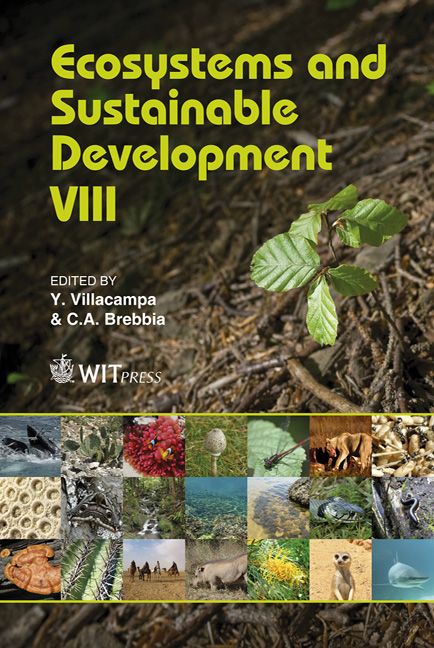Characterisation Of The Spatial Variability Of Waterlogging In The Blue River Basin (Argentina)
Price
Free (open access)
Transaction
Volume
144
Pages
9
Page Range
59 - 67
Published
2011
Size
2,170 kb
Paper DOI
10.2495/ECO110051
Copyright
WIT Press
Author(s)
Y. Villacampa, P. Sastre, M. Gandini, A. Cañibano & M. Cortés
Abstract
Considering the soil as a complex, dynamic and heterogeneous system, chaos theory is a useful tool for gaining new knowledge into its variability. Fractal geometry has a close relationship with chaos theory, which describes dynamic and chaotic events with a development in time and space that can be predicted probabilistically. Furthermore, the concept of fractal dimension can also be applied to the study of spatial and temporal phenomena that possess and retain some kind of irregular geometric pattern within a range of scales. It is increasingly used to characterise the various properties of soil and to describe and model the characteristic functions of water retention and mobility in soil. This study is based on the need to estimate waterlogging of agro-livestock farms in the Blue River Basin (6,237 km2), with a view to recommending the type of land use for each plot. By analysing Landsat satellite images, those with no cloud cover were adjusted spatially in order to build mosaics for eight points in time covering the entire study area. The images were then rated and processed, resulting in eight binary masks of non-flooded / waterlogged areas. This paper presents a method for calculating the fractal dimension based on the box counting process, in order to test its use in differentiating between varying degrees and distributions of soil moisture. The results indicate eight situations of soil moisture by means of the fractal dimensions calculated using this method. Using the parallelism test, the slopes of the simple adjusted linear
Keywords
fractal, soil moisture, dynamic system





